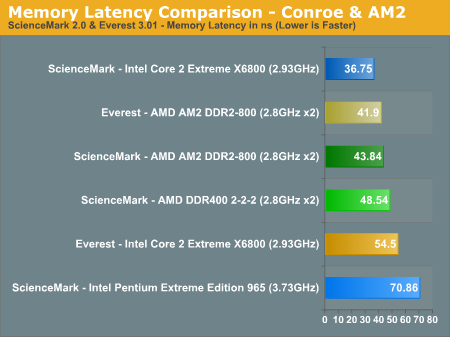black_edition
Power Member
Esse E6500 é para sair no Q4 há dois ou três roadmap em que aparece , agora o caso do E6300 com 4MB isso nunca vi nada a não ser um ES na XS.
Cumps
Cumps
mascarilha disse:na overclokers.UK nos restantes conroe (E6600 , E6700) ja mudaram aonde dizia arriving..... para :
Arriving week commencing July 24th 2006
ou seja a partir de dia 24 julho ( 2 feira) podem xegar a kualker momento .
cumps








Originally Posted by overcrash86
Thanks to Franck@X86 for his help, he had help me to find how to manage the multiplier :
approximately translated :
-use an MSR Editor same as CrystalCPUID
-Edit the MSR : 0x000001a0
-Set the bit 16 to 1 -> 0x61850089
into the power management of windows set always on
then have fun !!!


Não estou a ver o problema... É evidente que a baixa latencia provem da cache "unificada" e também da baixa latencia do FSB. Em relação aos resultados, são o que são, são numeros não teoria e já foram mais do que comprovados no XS e noutros sites da net.destr0yer disse:A pergunta que se põe é, como que os conroe abaixam tanto a latência? Se o controlador é no ***** e não no CPU?
Então a diferença para o Pentium D é gritante!
Duvido muito disso, penso que o resultado deve estar "aldrabado" pela cache do conroe ou é algum bug... externamente nada muda do P-4 para o conroe... Os dados levam o mesmo tempo para sair da memória e chegar ao CPU, visto quer no conroe, quer no P-4 965 terem o mesmo FSB e mesma memória/timmings/mhz
Já no everest os AMD deram kabazada...

"Intel today officially unveiled its new CPU lineup based on the Intel Core microarchitecture, with the lineup including 10 models - five desktop processors (Conroe) and five mobile CPUs (Merom)."
http://www.digitimes.com/mobos/a20060727VL203.html
A principal razão para a superioridade dos conroe a nivel de latências é um "disfarce" proporcionado pelo excelente motor de prefetch, ajudado pela cache unificada que eles possuem. Ainda assim, já se disse em reviews, que quando a AMD corrigir estes pontos (maybe K8L), voltar-se-á a verificar as vantagens do memory controller on-die.destr0yer disse:Então porque a discrepançia em relação a dois benchmarks?
Não é haver duvida, todos sabemos que a AMD está totalmente derrotadaAgora que o maior trunfo da AMD (Controlador de memória embutido + HTT também foi esmagado pelo "velho" e "obsoleto" FSB)